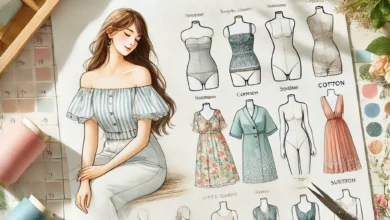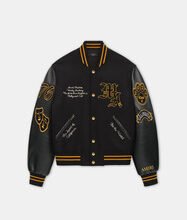
Modern style is not just a fashion statement; it’s a reflection of evolving societal norms, personal expression, and technological advancements. As trends shift and cultures intertwine, modern style has become a blend of timeless elegance and futuristic innovation. This article delves into how iconic sexy fashion photo shoots is redefined today across fashion, home design, technology, and lifestyle.
What is Modern Style?
Modern style initially stemmed from the early 20th-century design movement emphasizing simplicity, functionality, and the rejection of ornate aesthetics. It has evolved to include:
- Minimalism: Focus on clean lines and uncluttered spaces.
- Functionality: Emphasis on usability over extravagance.
- Adaptability: Integration of contemporary trends with traditional aesthetics.
Today, modern style transcends boundaries, merging with various influences to create something new and unique.
Fashion: The Cornerstone of Modern Style
Modern fashion is a reflection of individuality and innovation. Designers constantly push boundaries, blending traditional craftsmanship with avant-garde concepts.
1. Sustainability in Fashion
One of the most significant shifts in redefining modern style is sustainability. Consumers demand eco-friendly materials and ethical production practices.
- Upcycled Materials: Repurposing old fabrics into new designs.
- Slow Fashion Movement: Advocating for quality over quantity.
- Tech-Integrated Clothing: Smart textiles that monitor health or adapt to environmental conditions.
2. Inclusivity in Design
Fashion is no longer limited by gender, size, or ability. Modern designers prioritize inclusivity:
- Gender-Neutral Collections: Breaking stereotypes with unisex designs.
- Adaptive Clothing: Designed for individuals with disabilities.
- Body Positivity: Celebrating diverse body types.
3. Streetwear Meets Luxury
The rise of streetwear has revolutionized modern style, blending casual comfort with high-end aesthetics. Iconic collaborations between street brands and luxury houses, such as Gucci and Supreme, exemplify this trend.
Home Design: Modern Living Spaces
Modern style extends into interior design, creating spaces that reflect functionality, comfort, and beauty.
1. Open Floor Plans
Open floor plans are a hallmark of modern homes. They promote:
- Natural Light: Large windows and open layouts.
- Flexibility: Multi-purpose spaces for work, relaxation, or entertainment.
- Connection: Seamless integration between indoor and outdoor living.
2. Smart Homes
Technology has redefined modern living:
- Automation: Lights, thermostats, and security systems controlled remotely.
- Energy Efficiency: Solar panels and energy-efficient appliances.
- Personalization: AI-powered devices that adapt to individual preferences.
3. Biophilic Design
Incorporating nature into modern spaces enhances well-being. Biophilic elements include:
- Indoor Plants: Adding life and purifying air.
- Natural Materials: Wood, stone, and organic textiles.
- Eco-Friendly Design: Sustainable construction materials and practices.
Technology and Modern Style
The intersection of technology and design has transformed how we perceive style.
1. Wearable Technology
Smart devices are now fashion statements. Examples include:
- Smart Watches: A blend of function and style.
- AR Glasses: Augmenting reality with sleek designs.
- Fitness Trackers: Stylish bands that monitor health metrics.
2. Digital Fashion
The rise of virtual and augmented reality has given birth to digital fashion. Designers create virtual clothing for avatars in the metaverse, enabling unique, experimental designs without physical limitations.
3. 3D Printing in Fashion
3D printing has opened new doors in design and production. Advantages include:
- Customization: Personalized fits and patterns.
- Efficiency: Reduced waste in production.
- Innovation: Complex designs previously impossible with traditional methods.
Lifestyle: Redefining Modern Living
Modern style extends to how we live, work, and interact.
1. Wellness-Oriented Lifestyle
Well-being is a cornerstone of modern living. Trends include:
- Mindfulness Practices: Meditation, yoga, and digital detoxing.
- Healthy Eating: Plant-based diets and organic foods.
- Fitness Integration: Home gyms and wearable fitness technology.
2. Flexible Work Culture
The shift toward remote and hybrid work models has influenced modern style:
- Ergonomic Furniture: Sleek designs prioritizing comfort and posture.
- Home Offices: Functional yet aesthetically pleasing workspaces.
- Casual Work Attire: Blending professionalism with comfort.
3. Experiential Living
Modern consumers value experiences over material possessions:
- Travel: Exploring unique destinations with sustainable practices.
- Cultural Fusion: Integrating global influences into daily life.
- Creative Hobbies: DIY projects, art, and music as forms of expression.
The Role of Social Media
Social media plays a pivotal role in shaping modern style. Platforms like Instagram, TikTok, and Pinterest act as inspiration hubs, allowing trends to spread globally within moments.
1. Influencer Impact
Influencers redefine style standards by showcasing unique perspectives. They inspire followers to experiment with their look, home, and lifestyle.
2. Virtual Communities
Online communities provide a space for collaboration and idea exchange, fostering innovation in modern style.
3. Instant Feedback
Brands receive real-time feedback, enabling them to adapt quickly to consumer preferences.
Challenges in Redefining Modern Style
While the evolution of modern style is exciting, it comes with challenges:
1. Sustainability vs. Consumerism
The fashion and design industries struggle to balance consumer demand with sustainable practices.
2. Cultural Appropriation
The blending of global styles risks cultural insensitivity, highlighting the importance of ethical design.
3. Technology Dependency
As technology becomes integral to style, the risk of over-reliance grows, potentially overshadowing traditional craftsmanship.
Conclusion
Modern style is a dynamic fusion of tradition, innovation, and individualism. It spans fashion, home design, technology, and lifestyle, continuously evolving with societal changes. By embracing sustainability, inclusivity, and creativity, we can redefine modern style to be more meaningful and impactful. Whether through wearable technology, eco-friendly homes, or culturally inspired designs, modern style is about living authentically while looking toward the future.


